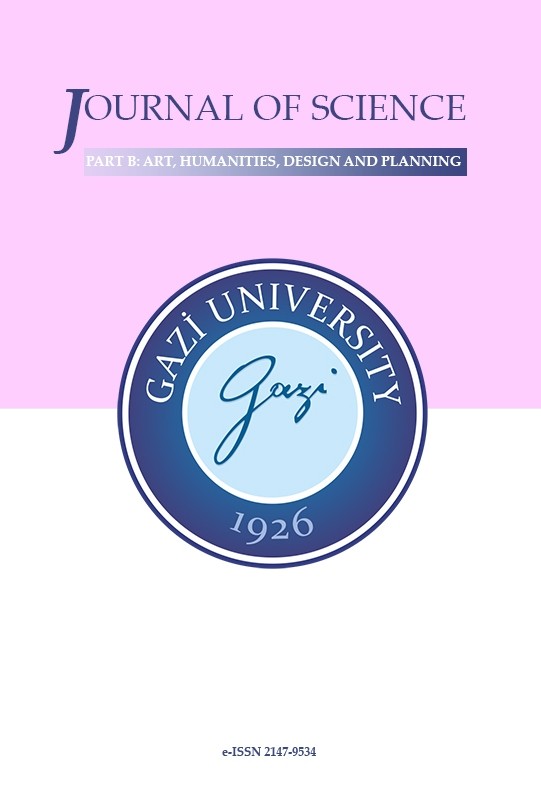A Research on Material and Manufacturing Methods Training in Industrial Design
A Research on Material and Manufacturing Methods Training in Industrial Design
In product design, a thorough understanding of the materials used is crucial. The material must be thoughtfully evaluated and integrated throughout the entire design process, from its initial introduction to its eventual incorporation into the final product. Typically, material selection occurs towards the finale of the product design process in Industrial Design departments. In other words, the product determines the material used. However, the material can also influence the product's design based on its properties and characteristics. The materials and production methods influence product quality, sustainability, and appeal. Therefore, careful consideration of these factors is imperative during product development. For novice designers, pursuing knowledge begins in higher education and continues throughout their professional lives. As inquisitive individuals, designers should strive to stay up to date with all developments related to technology and manufacturing, including newly produced materials.
In this research, an evaluation is carried out to assess the efficacy of the Materials and Production Techniques courses offered by the Industrial Design Department at Gazi University. A total of 148 first- and second-year students who enrolled in the course participated in research through online surveys. Upon analysing the results, it was found that the second-grade students performed better regarding their knowledge of materials and manufacturing methods. Students' perceptions of products made with different materials were measured, as the sensory properties of the material were deemed crucial in addition to its structural and functional properties. The research was carried out with the students who took this course during the distance education period and also aimed to measure the effect of distance education on teaching material and manufacturing methods.
Keywords:
Material, Manufacturing Methods Industrial Design, Sensory Factors,
___
- [1] Haug, A. (2018). Acquiring materials knowledge in design education, International Journal of Technology and Design Education, 29, 405–420. https://doi.org/10.1007/s10798-018-9445-4
- [2] URL-1. Material named Coffeefrom® Strong. https://www.materially.eu/en/m-selection/coffeefrom-2 Last Accessed: 10.07.2023
- [3] Van Kesteren, I. E. H. (2008). Selecting materials in product design. [Doctoral Thesis. TU Delft: Industrial Design Engineering Department].
- [4] Derviş, B. (2014). Türkiye’de Endüstriyel Tasarım Lisans Eğitiminde Malzeme Dersinin Uygulaması Üzerine Bir Araştırma ve Malzeme Stüdyosu Önerisi. (Yayın No:365558) [Yüksek Lisans Tezi, Anadolu Üniversitesi].
- [5] Zuo, H. (2010). The selection of materials to match human sensory adaptation and aesthetic expectation in industrial design. METU Journal of the Faculty of Architecture, 27(2), 301–319.
- [6] Kaya, N. A., Erdem, H., & Ercömert, Ç. (2020). Endüstriyel Tasarım Eğitiminde Endüstri 4.0 Ve Toplum 5.0’a Yönelik Derslerin Yoğunluğunun Tespiti. UTAK 2020 Bildiri Kitabı Tasarım ve Öngörü, (8-10 Eylül 2020).
- [7] Ashby, M. F., & Johnson, K. (2003), The art of materials selection, Materials Today, s:24–35.
- [8] Ashby M. F., & Johnson, K. (2010), The Art and Science of Material Selection in Product Design, Amsterdam; Boston: Elsevier/ Butterworth-Heinemann.
- [9] Van Kesteren, I. (2010). A user-centred materials selection approach for product designers. METU JFA 2010/2, (27:2) 321-338.
- [10] Öztürk, A. (2014). Endüstriyel Tasarım Eğitiminde Yeni Yöntem ve Yaklaşımlar. (Yayın No:391350) [Yüksek Lisans Tezi, Ondokuz Mayıs Üniversitesi].
- [11] Şekerci, Y., Mutlu Danacı, H., & Kaynakcı Elinç, Z. (2021). Uzaktan Eğitimin Uygulamalı Derslerde Sürdürülebilirliği: Mimarlık Bölümleri Örneği. Mehmet Akif Ersoy Üniversitesi Fen Bilimleri Enstitüsü Dergisi, 12 (1), 54-68. DOI: 10.29048/makufebed.874055.
- [12] Karadağ, E., & Yücel, C. (2020). Yeni tip Koronavirüs pandemisi döneminde üniversitelerde uzaktan eğitim: Lisans öğrencileri kapsamında bir değerlendirme çalışması. Yükseköğretim Dergisi, 10(2),181–192. doi:10.2399/yod.20.730688.
- [13] Mun, B., & Arslan Selçuk, S. (2018). Mimarlıkta Yaparak Öğrenme ve Bir Araştırma Ortamı Olarak Öğrencilerin Ürettiği Geçici Strüktürler. International Journal on Mathematics, Engineering and Natural Sciences, 2(1): 12-25.
- [14] Yıldırım, A., & Şimşek, H. (2018). Sosyal bilimlerde nitel araştırma yöntemleri (11. baskı). Ankara: Seçkin Yayıncılık.
- [15] Mcmillan, J. H. (2000). Educational research: Fundamentals for the cunsomer (3rd ed.). New York: Longman.
- [16] Guest, G., MacQueen, K. M. & Namey, E. E. (2012). Applied thematic analysis. Thousand Oaks, CA: Sage.
- [17] Ashby, M. F., & Johnson, K. (2006). Materials and design: the art and science of material selection in product design. Butterworth-Heinemann.
- [18] Top, S. M., & Ayçam, İ. (2023). Material Used in 3-Dimensional Printing Technology in the Construction Industry, Gazi University Journal of Science Part B: Art, Humanities, Design and Planning, 11(1): 1-17.
- [19] Zuo, H. (2010). The selection of materials to match human sensory adaptation and aesthetic expectation in industrial design. METU Journal of the Faculty of Architecture, 27(2), 301–319.
- [20] Sevgül, Ö. & Yavuzcan, H. G. (2022). Learning and Evaluation in the Design Studio, Gazi University Journal of Science Part B: Art, Humanities, Design and Planning, 10(1): 43-53.
- Yayın Aralığı: Yılda 4 Sayı
- Başlangıç: 2013
- Yayıncı: Gazi Üniversitesi
Sayıdaki Diğer Makaleler
Ekrem Bahadır ÇALIŞKAN, Filiz KARAKUŞ
A Study on the Applicability of Energy Efficient Design Approaches in Airport Terminal Buildings
User - Space Relationship in Emergency Departments
A competition story: Nazım Hikmet Cultural Center
Neslihan DEVRAN, Fatih Çağrı AKÇAY
Analysis of Space in Architecture: A Perspective on Subject-Meaning Relationship
Lost Tangible Cultural Heritage: A Traditional Tokat House Restoration Project
EN-SUITE BATHROOM ANALYSIS IN A TRADITIONAL TURKISH HOUSE: YALVAÇ HOUSE AND GUSÜLHANE
Nuriye Hande KUTBAY, Cemil YAVUZ
Esra BAYIR, Mustafa Adil KASAPSEÇKİN
Urban Morphology Schools: A Review of the English, Italian, and French Schools of Thought
